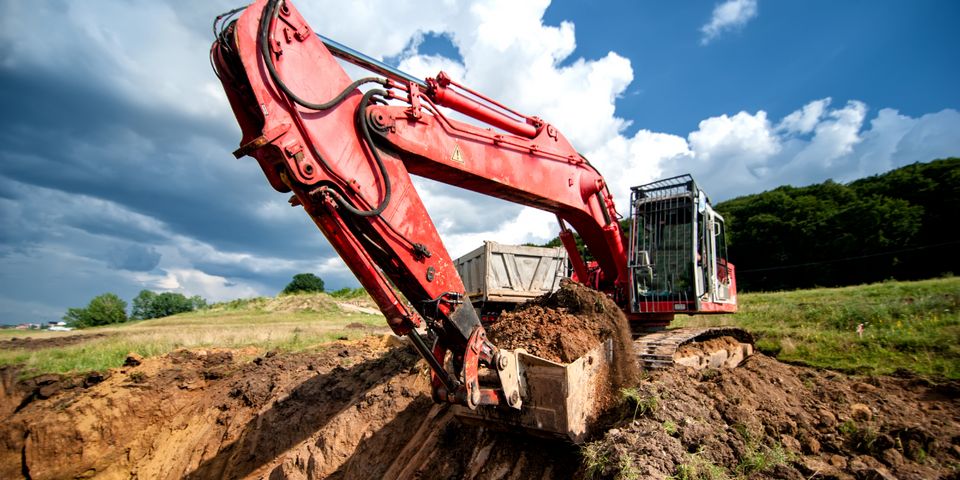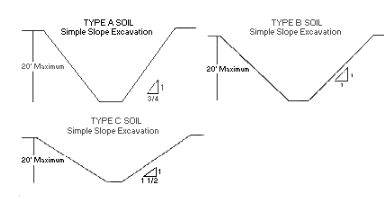Excavator Things To Know Before You Get This
Wiki Article
An Unbiased View of Excavation Contractors Near Me
Table of Contents7 Easy Facts About Excavating Contractors DescribedDemolition for BeginnersThe Mini Excavator PDFsThe Single Strategy To Use For Excavation Contractors Near MeExcavation Contractors Near Me for Beginners

Scrapers or Pans dig deep into dirt in one place, haul and dispose the dirt in one more place (demolition). It is tough to match the effectiveness of scrapers for cut/fill soil procedure if the haul distance is much less then a mile. Scrapers are generally pulled by a rubber tire wheel tractor as well as are in some cases pushed via the cut location by an excavator.
There are sometimes that scrapers are not used for site grading and a dump vehicle is utilized: the haul may be to long, the haul might go across roads where scrapers are not permitted, tough rock might be run into, devices accessibility, and so on. Unload vehicles remain in usual use and also possibly need little discussion.
Several vehicles have a top-hinged tailgate that can not discard any kind of rock wider then the tailgate width. "Rock body" beds, on the other hand, have no tailgates and also can dispose any kind of dimension rock, although their volume capability is diminished. These web links show equipment specifications for several usual dump vehicles. Compaction Devices boosts the thickness of the soil as well as in many cases offers a smooth, rolled surface.
Rumored Buzz on Excavation Contractors Near Me
From a simple examination pit to percussion drilling to core drilling the proprietor has progressively a lot more expensive choices that generate increasingly much better data about the website underground. The Owner on a 100,000 SF structure task might license twenty dull locations with split spoon dirt samples taken until rock is gotten to as well as then core examples of rock.Recognizing the kind and top quality of rock (from the core examples) and also place of rock (from the soils boring) is a real benefit in jobsite preparation. Conversely, the Owner of a 100,000 SF building may choose to continue with no geotechnical testing whatsoever. The decision about geotechnical testing is normally made by an Owner without input from the Building Supervisor.
The area on Soils and also Geology aids you recognize the terms in the geotechnical report. A knowledge of the approximate place of the rock helps the Building and construction Manager to intend the sequence of actions following rock excavation. If rock remains in one corner of a large structure task, as an example, the earth excavation might begin at the opposite end of the structure in order to start foundation job soonest.
Starting the foundation job early would be an excellent idea if the rock might be removed by ripping. If the rock is incredibly difficult and also requires considerable blasting, it might be prudent to hold foundation job until the blasting is completed. The Building Manager ought to work with these sorts of decisions as well as make use of all the technological day offered.
Excavating Contractors for Dummies
Unclassified excavation states that all rock or other unanticipated materials (excluding unsafe materials) experienced in the sitework will certainly be the duty of the Service provider at no modification in agreement cost. An unclassified excavation is less complex from a book-keeping viewpoint and also puts the duty for geotechnical problems onto the Sitework Professional.It's right here incredible what a hefty rainfall can do to a construction task. Prior to the rain, the website may be completely dry, hefty equipment successfully relocating earth, the various other professions smoothly doing their work.
In many locations of the world, the Construction Supervisor must remember a simple reality: IT WILL CERTAINLY RAIN. Excellent preparation can minimize the damage as well as interruption of a hefty rain to a jobsite. Often the excavation and grading is delegated the Sitework Specialist (and also their Foremen is liable to supervise as well as guide the hefty equipment and operators).
The Building and construction Supervisor should be continually mindful of what rain will do to the project site. It is not uncommon for the Sitework Foreman to work their hefty devices for optimal efficiency and also wish it does not rainfall. Among the very best ways to prepare for rainfall is to incline all grades to drain and to smooth rolled the surface area before a rain.
The Buzz on Trencher
The Building Supervisor must be far-sighted adequate to guarantee that hefty rainfall does not quit working on the project longer than required. Daily hop over to here conversations with Sitework Foremen might be called for to achieve this goal. At any time excavation is needed listed below the existing water table on a task, the procedure of dewatering need to be thought about.In an absolutely natural soil, the water travels so gradually with the clay or silt that dewatering is not usually necessary for the reasonably brief time of excavation. Dewatering may be required for a solitary ground excavation or for an entire project site. One of the most typical dewatering methods are trench drains, deep wells and well points.

Ground water seepage can also be reduced by cutoff methods such as sheet loading. The expenses for dewatering can be shocking, consisting of equipment service, labor and electricity (or gas). High dewatering costs have paled the revenue margins on far too many tasks. The numerous variables noted below make the job of estimating dewatering prices extremely challenging, and also really inexact.
This alternative ought to constantly be taken into consideration when examining the prospect of dewatering. Clearly the choice is only feasible if gravity can run the water to lower ground. Trench drains pipes can be cut with a backhoe and also loaded with a rugged, granular product (# 4 stone for instance), but treatment should be worked out in picking the water outlet type and also location.
Little Known Questions About Excavating Contractors.
A siphon, by definition, uses atmospheric stress to bring water from one elevation, up over an obstacle, to a lower altitude. The pipes in a siphon system have to be closed and some resourcefulness is often needed to completely load the siphon pipeline. The siphon pipeline should be full for the siphon to start.A deep well contains a pump, tube as well as an upright well casing. The pump consumption is at the base of the well casing (normally some crushed stone is put down there as a filter tool) (grading contractors). The water is pumped up the pipe, out of the well casing, as well as to an appropriate discharge area.
In a coarse sand, as an example, a huge location can be pumped to near the pump intake altitude. A much less permeable dirt, on the other hand, lowers the effectiveness of a deep well. Since the pump is usually at the bottom of the deep well, there are no elevation limitations due to vacuum lift, and also deep wells can lower the groundwater over 50 feet.
Under of the wellpoint there is a 2 foot long screen as well as shutoff, water jets out of this valve and also produces a hole into which the wellpoint pipe can see this be reduced. This hole is often made a larger diameter (for example 10 inches) to permit a rugged sand backfill to assist filter the water (demolition).
Report this wiki page